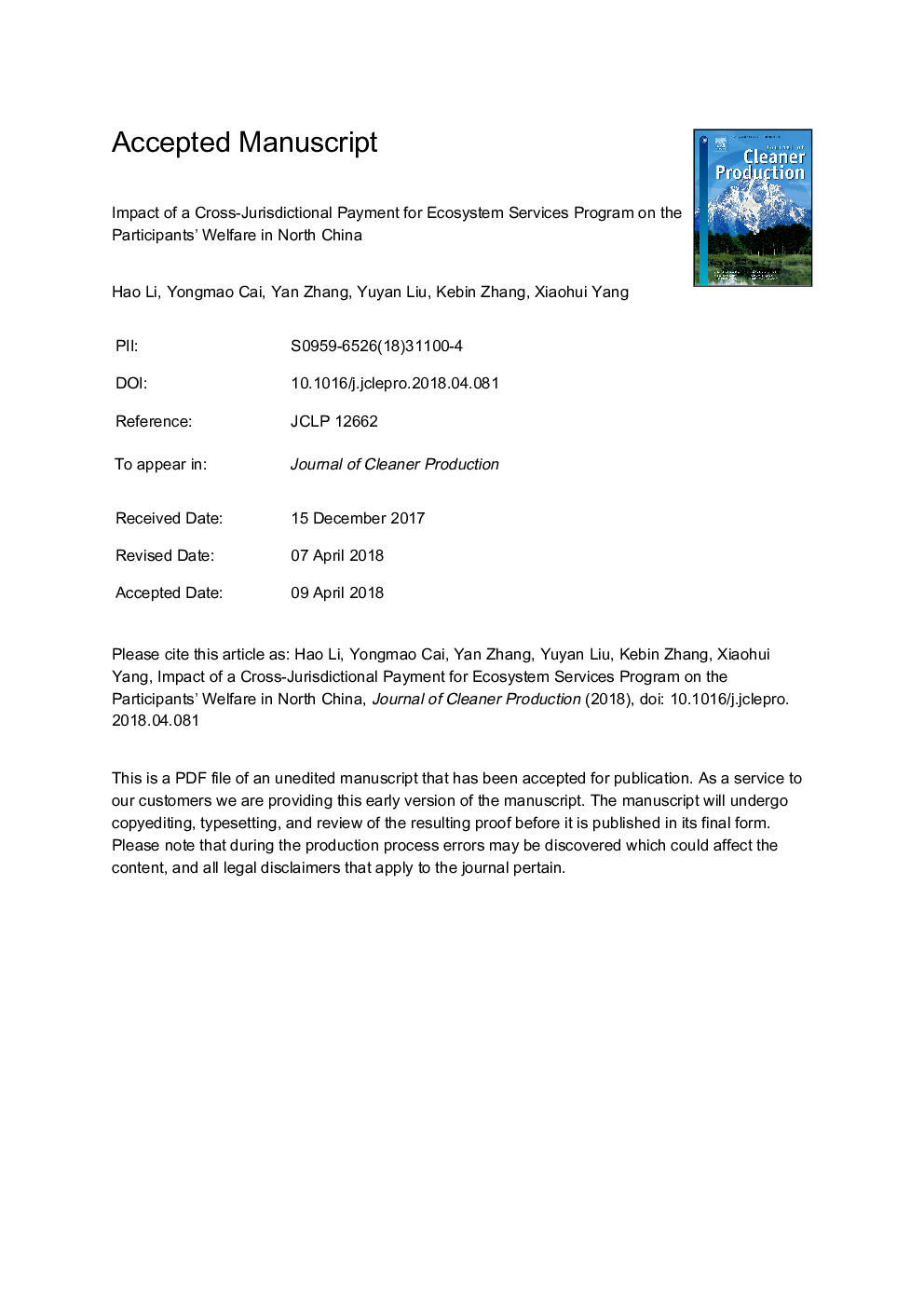| Article ID | Journal | Published Year | Pages | File Type |
|---|---|---|---|---|
| 8095174 | Journal of Cleaner Production | 2018 | 31 Pages |
Abstract
The Paddy Land to Dry Land (PLDL) program, implemented in the cross-jurisdictional Miyun Reservoir Catchment (MRC) area of North China since 2003, is designed to protect source waters for the city of Beijing and alleviate poverty in local rural households. It is not known whether this program has improved the welfare of the participating households. This paper investigates the welfare effects of this program on the participating households. Two regression models combined with descriptive analysis were employed to analyze the household participation decision. To minimize the selection biases due to the non-random program implementation, three estimators, including Difference in Difference (DID), Propensity Score Matching (PSM) and Difference in Difference aligning matching technology (DDM), were selected to compare the welfare changes of the participants and non-participants before (2002) and after (2015) implementation of the program. The regression results showed that there are a few ex-ante differences between the participants and non-participants, and the three estimators revealed several common findings, revealing that the PLDL program has a positive but small welfare effect on participants, and the increases in the household off-farming, other transfer and property income offset the significant decrease in cropping income. Participants became less reliant on cropping income relative to non-participants during the study period. However, the nonoccurrence of the designed shift of surplus agricultural labor to off-farming employment suggests that the PLDL program may meet the sustainability risk. It can be concluded that the PLDL program is not a totally successful cross-jurisdictional Payment for Ecosystem Services (PES) program for sustainably improving the household livelihoods of participants in the MRC area. Attention should be focused on follow-up activities, including creating more appropriate local off-farming employment opportunities and providing capacity-building activities and technical services. In addition, comparisons of the three estimators suggest that DDM is particularly effective in estimating the program's welfare effects on heterogeneous rural households.
Related Topics
Physical Sciences and Engineering
Energy
Renewable Energy, Sustainability and the Environment
Authors
Hao Li, Yongmao Cai, Yan Zhang, Yuyan Liu, Kebin Zhang, Xiaohui Yang,
